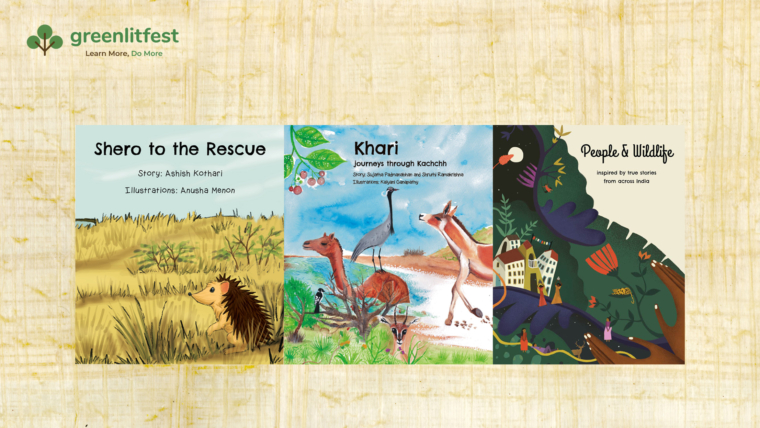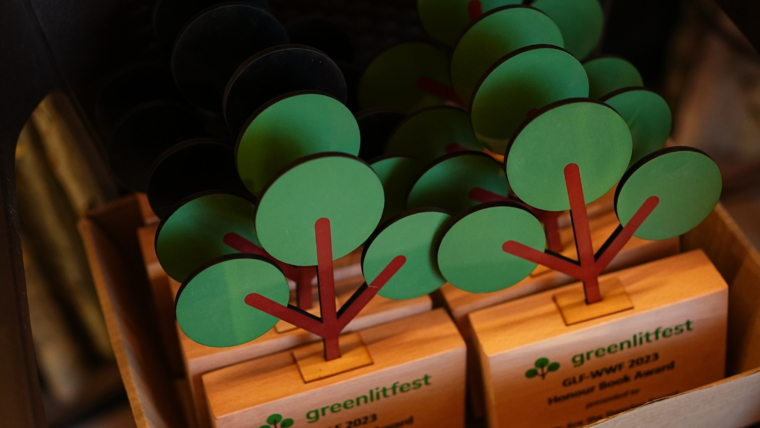By The Habitats Trust
Greenlitfest is delighted to bring to you this series of notes from the field to appreciate the work done by the researchers and to gain a deeper understanding of our environment in partnership with The Habitats Trust.
Passing a flock of vultures feeding on a carcass is enough to give one pause, both in wonder and in concern — especially when they’re by the side of a busy road.
By the turn of the century, vultures had almost vanished in India. Nationwide conservation efforts brought them back from the brink, but, as per the recent State of India’s Birds report 2023, the vulture population is still declining – a jarring truth, for there is no ecological replacement for the critical role vultures play in the ecosystem.
In the peripheral grasslands of Dudhwa Tiger Reserve, one can still see these threatened birds in good numbers, for it is one of the few protected spaces in Uttar Pradesh. As seen here in winters, resident White-rumped Vultures often feed together on carcasses with big groups of migratory Himalayan and Eurasian Griffons. The first photo was clicked on a bustling road to Lakhimpur town, and the second on the periphery of the national park.
The Habitats Trust’s On-Ground Initiatives team has so far recorded six vulture species in their grassland surveys of the national park – seven species have been recorded in Dudhwa in all, making it the most important vulture hotspot in Uttar Pradesh. White-rumped Vulture, Red-headed Vulture, Slender-billed Vulture, Egyptian Vulture, Cinereous Vulture, Himalayan Griffon and Eurasian Griffon are found in Dudhwa, the first three being Critically Endangered. So far, vulture sightings in Dudhwa continue to be uncommon – but not rare. Here’s hoping that continues to be the case.
Text and photos by Kaushik Sarkar, Senior Executive, On-Ground Initiatives, The Habitats Trust. Kaushik has spent almost a year understanding the landscape at Dudhwa.



